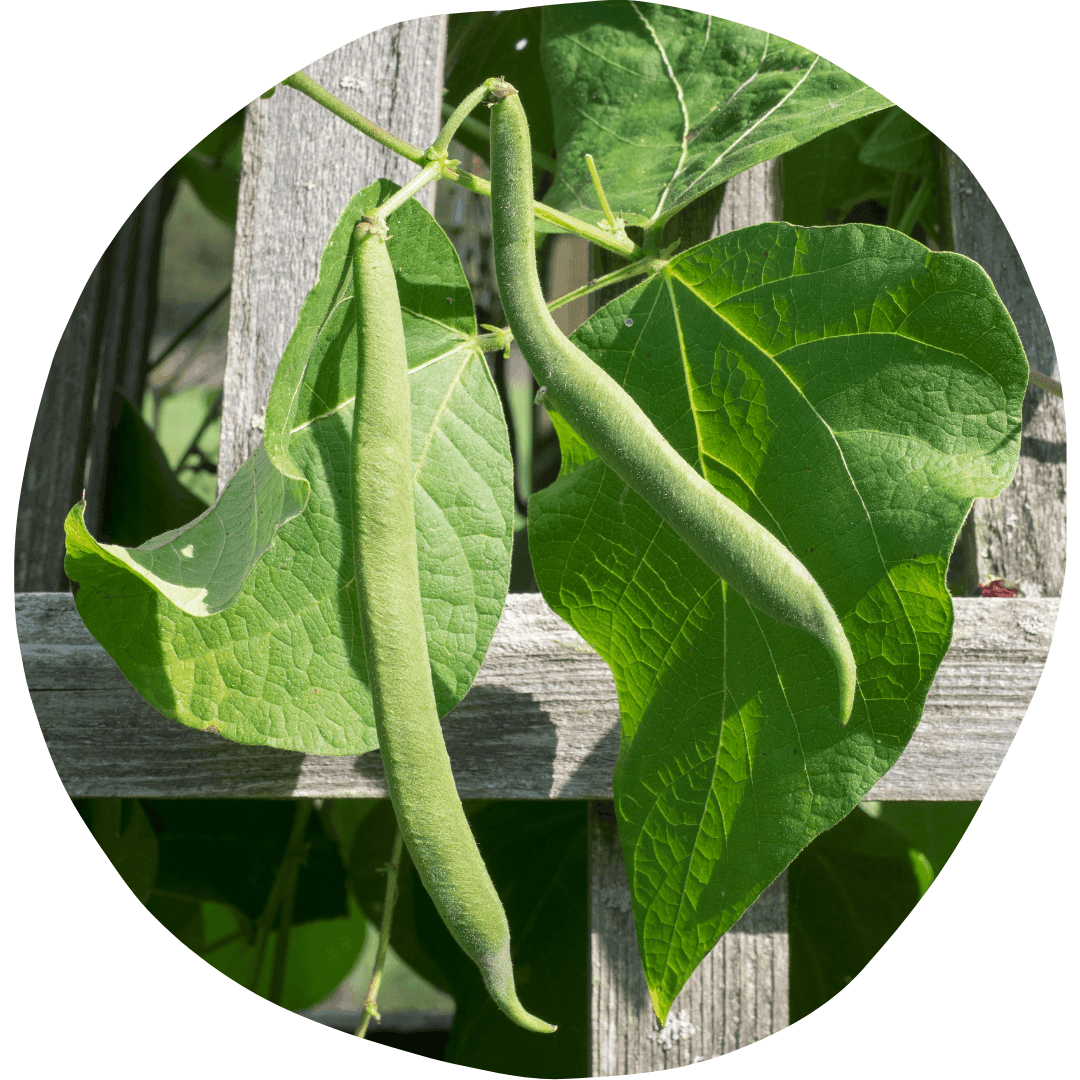How to Grow Beans
Types
Bean (Phaseolus vulgaris) types include pole beans, bush beans, and French beans. Runner beans (Phaseolus coccineus) are a related species that are typically grown for ornamental use, though their pods are also edible. Other species of beans include broad beans (Vicia faba) and soy beans (Glycine max).
Pole beans require support to grow in the form of a trellis, stakes, or netting. They grow continuously and produce pods at different intervals, meaning there can be beans at various stages of maturity on one plant. Harvest regularly to maintain growth and production.
Bush beans grow to a set height, usually between 18" and 24" high. Bush beans also produce continuously and should be harvested regularly to maintain pod growth.
French beans, also known as filet beans, come in bush, climbing, and dwarf varieties. French beans are distinguished by their long, thin shape and tender, full flavour.

Growing Conditions
Beans are an easy-to-grow spring crop that thrive in the moderate temperatures of shoulder seasons. Choose a planting location that drains well and receives full sun. Beans are nitrogen-fixing, which means the plants (with the help of beneficial soil microorganisms) are able to convert nitrogen from the air into usable nitrogen in the soil. Because of this ability their fertilizer needs are minimal, but poor soil should be amended with compost before planting.
Starting
Beans can be sown directly after the soil has warmed in the spring. Seeds may rot in the ground if planted before the soil reaches 15°C, but temperatures above 20°C are optimal. Germination typically takes 7-14 days. The root systems of beans are sensitive to transplanting and starting indoors is not recommended. Sow your seeds about 1“ deep, 3-4" apart, in rows 18" apart. If adding supports, place them now to avoid disturbing growing roots after seeds germinate. Bean seeds can be sown successionally every two weeks in the spring to ensure a continual harvest throughout the growing season.
Find our full guide to seed starting here.
Care
Beans are quick growers and require consistent watering to continue producing flowers and pods. Otherwise, they are a fairly low-maintenance crop and need little oversight to supply a bountiful harvest. For pole beans, pinching back the vines once they reach the top of their supports can encourage plants to direct their energy toward flower and pod production. Weed carefully to avoid disturbing their roots.
Pests and Diseases
Aphids - Small green, black, or brown insects that feed on the sap of garden plants. You'll find them under leaves, at blossom tips, and in the joints of stems.
Cucumber Beetles - Black and yellow striped beetles that eat tender leaves, creating large holes between leaf veins.
Cutworms - Small caterpillars that chew through stems. Look for damage to the stems at ground level.
Japanese Beetles - Shiny blue-green beetles with voracious appetites that eat around the veins in leaves, leaving lace-like skeletons behind.
Common Mosaic Virus - A virus that causes mottled light and dark spots on leaves and stunted growth.
Powdery Mildew - White mildew on the top surfaces of leaves, starting as small spots and growing to cover the entire leaf.
Leaf Spot/Blight - Fungal infections that cause dark spots on foliage.
Crop rotation, garden cleaning, and proper spacing between plants are the best ways to prevent problems caused by pests and diseases. Diatomaceous earth can be used to control crawling pest species, while sticky traps will catch flying pests. Row covers and insect netting can also prevent travelling pests from landing on your crops and causing damage. Ensure good drainage in your chosen planting spot to prevent problems with fungus and rot. Contact us for more specialized pest control methods such as beneficial nematodes.
Harvest
Beans take from 50-70 days to reach maturity depending on variety. They should be picked regularly to encourage the plant to keep producing. Harvest your beans when they're young and tender for the best flavour and texture. Be careful when picking beans not to tear the vines; we recommend using pruners or snapping each bean off the vine at its stem. Beans don't have a long storage life and should be eaten within a few days of harvest to avoid developing a tough texture. Alternatively, beans can be blanched and frozen immediately following harvest.

